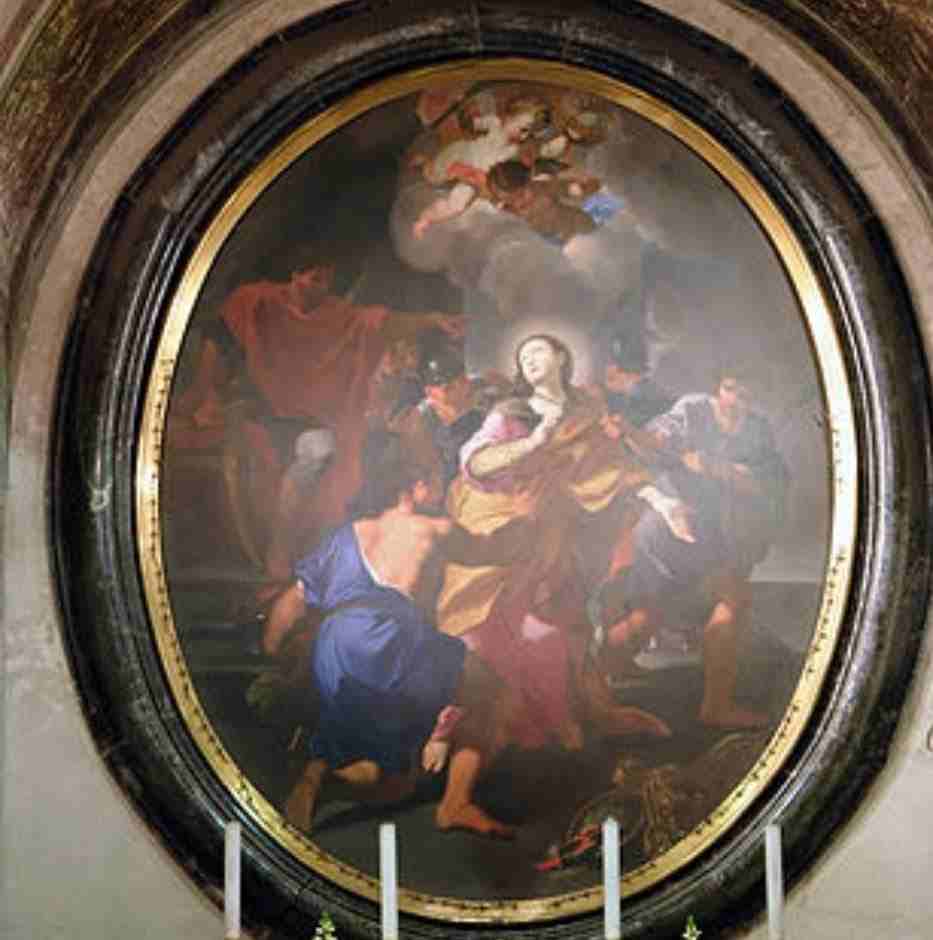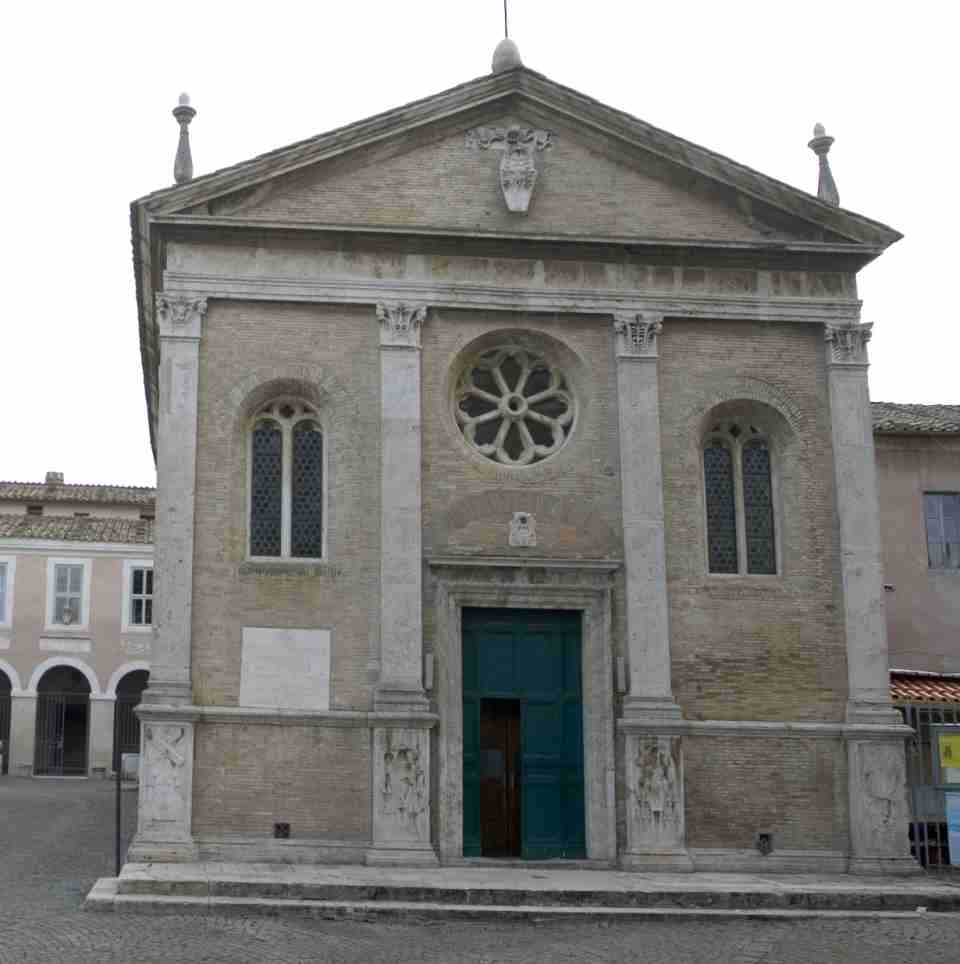THE CATHEDRAL OF S.AUREA
History of the Cathedral
Ostia in ancient times had the privilege of being the second most important diocese after that of Rome, and the bishop of Ostia had the prerogative of consecrating the elected pontiff of Rome as bishop and anointing the emperor. Towards the end of 1500 by decision of Pope Sixtus V Ostia is the seat assigned to the Cardinal Dean of the Sacred College. Twelve bishops of Ostia have been elected popes. The church of S. Aurea was completed in 1483. It was commissioned by the French cardinal of Estouteville who, dying, left the task of completing it to Cardinal Giuliano della Rovere, future Pope Julius II. The architect was the Florentine Baccio Pontelli, who also designed the castle of Julius II. It became a cathedral in an unspecified period and was built in its current form at the same time as the Rocca. The primitive building, larger in size and with opposite orientation, gravitated on a paved road axis still visible today in the Ravenna Park.
The restructuring of the Borgo involved the creation of piazza della Rocca which the building overlooks. The external perimeter is moved by pilasters decorated at the base with reliefs depicting weapons and objects related to war and the symbolic world.
Two marble coats of arms are visible on the main facade: on the pediment that of Cardinal Giuliano della Rovere (1483-1503), on the lintel that of Cardinal Gesualdo (1561-1603), whose name appears in the inscription on the architrave. Inside, the single nave is covered with wooden trusses decorated with lilies; above the apse you can read the inscription with the dedication of Cardinal Giuliano della Rovere. In the cathedral there are epigraphic documents of the cult of the martyr Aurea: a marble paschal candle (V century) on which the abbreviated inscription of the Latin name of the saint is engraved (S. Aurea), and a sepulchral slab (III-IV century) in which the same name is transcribed in the Greek language (Chryse). Medieval documents placed on the site the tomb of Monica, mother of St. Augustine. This tradition was confirmed in the 1950s by the discovery, on site, of a fragmentary inscription which preserves part of the epitaph in verse dedicated to Monica by Consul Anicio Auchenio Basso in 408 (right chapel).
The functions of the cathedral are confirmed by the presence, in the left aisle, of a repository for the custody of the olea sacra (distinctive of cathedrals), attributable to the Cosmatesque school (XII-XV century).
Sant’Aurea
Who was Aurea, (in Greek ‘Chryse)?
She was born in the early third century into a noble family. She embraced the Christian faith. and she was exiled to Ostia, imprisoned, and then martyred, chained and drowned in the sea. Bishop Ciriaco and other Christians were also martyred in Ostia. The recovered body of Aurea was buried in a land owned by the Saint which later became a Christian cemetery. After many centuries, in 1981 a marble cushion with the engraving ‘Chryse hic dormit’ was found in Ostia. There is also a fifth century column, with the inscription in Latin, where it speaks of Santa Aur. In the same place where the church of Sant’Aurea stands, Santa Monica was buried, who was in Ostia in 387 together with Sant’Agostino , her son. She died and was almost certainly interred in the same place where Aurea had been buried.

In the church there is the tombstone of the late Monica. In short, an early Christian basilica already existed and it is not known for certain whether it is the same one on which the current church of S. Aurea was later built.
Aurea became the patroness of the sailors of Ostia, she who “carries ships on the waves with the wind”
The primitive building was larger and with opposite orientation, the entrance was from the side of the apse.
Later the piazza della Rocca was created and the church changed its front.
The ceiling
The church is twelve meters high at the top. Illuminated by fifteenth-century mullioned windows and a rose window. Inside, the single nave is covered with wooden trusses decorated with lilies.
The chapel
On the right there is the chapel of S. Monica built in 1627 on the ancient Christian necropolis, where the Saint was buried. Monica’s tombstone is an archaeological find of great value. The beautiful and intense canvas in the chapel, attributed to Pietro da Cortona, depicts the ecstasy of Santa Monica in Ostia. In the same chapel there is a sculpture by Raoul Vistoli and a copy of the funerary cushion of S. Aurea.
The apse
The apse is framed by a triumphal arch of ancient marble. The altar is new, but retains two bas-reliefs from the 15th century similar to those of the pilasters outside the church. On the wall of the triumphal arch you can see fragments of frescoes from the Roman school of the 16th century. On the right S.Paolo, and on the left S.Pietro with a pope. In the center an oval by Andrea Sacchi, 1627, depicting the martyrdom of S. Aurea. Next to it is the marble stump of S. Aurea. Along the walls there are tiles inspired by Luca della Robbia depicting them here
